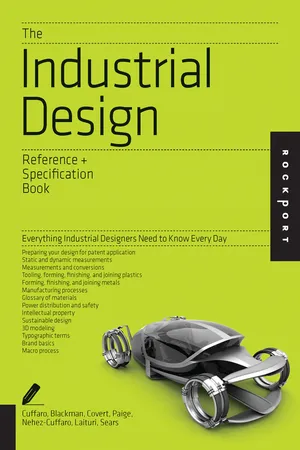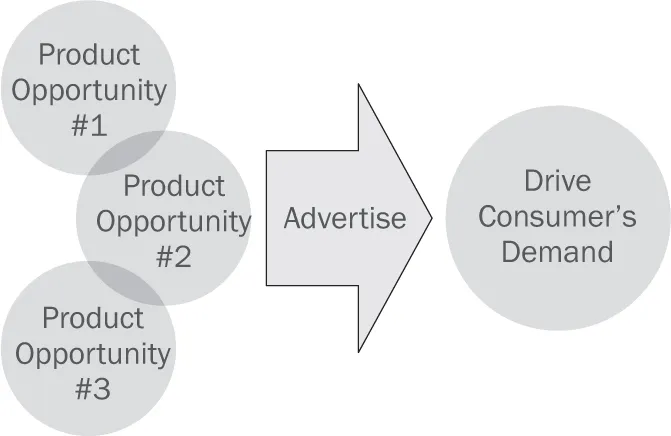![]()
Chapter 1: Design in the Context of Business
by David Laituri
OVERVIEW
While many chapters in this book concentrate on various aspects of the day-to-day design process, this chapter provides a basic, abbreviated overview of the larger business environment in which design exists (and would not exist without), as well as some of the ways design interacts within this larger environment. Design is a fundamental business function, as are finance, logistics, operations, marketing, sales, and research and development, depending on the company. For a business to be successful, and to maximize its resources, all of these basic functional units must work well together.
Design is a fundamental business function, engaged in concert with other business functions.
Design in all its forms was born within a business environment, to meet a business need or serve a business purpose. The design/business relationship, some argue, is what separates the applied arts, particularly design, from the fine arts, such as painting, photography, or sculpture. The “make more than one” dimension of design—whether for print, commerce, or mass production—is what inextricably ties design to business. Design, at its most basic level, is about helping businesses seek a sustainable advantage in their given market, an advantage that leads to consumer preference and, in turn, to improved profits.
In the early stages of your design career, it is important to realize that as you move forward in this profession, you will be required to understand these basic concepts and apply them in your daily professional life. As design continues to evolve and mature as a critical competitive advantage, it is safe to assume that business will play more of a role in design’s future, not less.
The evolution of the design profession has mirrored development of the surrounding economy.
THE BUSINESS OF DESIGN
Businesses share a fundamental purpose, which is to develop products and/or services to exchange with consumers for a profit. To accomplish this, a business must identify a product, a service, or some combination, that targets a consumer’s need or desire; and bring together the financial, raw material, and labor resources to develop and deliver this product and/or service efficiently to these consumers. The two key concepts to note here are efficiency, the continual effort to maximize use of financial, labor, and other resources; and effectiveness, the continual effort to maximize purchases by the consumer, thereby assuring the highest possible retained earnings, or profits. This profit-creation objective is arguably the central element of all business activity. Without profits, a company would eventually deplete its financial resources and cease to exist. Ignoring the central role of profit in any business is detrimental, and businesses’ investments in design functions are no exception.
MARKETING
Planning the most efficient and effective path to this profitable contribution is known as developing a design strategy. The design strategy needs to account for the company’s product sector, market segment, various strengths and weaknesses, technological assets, manufacturing capabilities, channels of distribution, and competitive products or services in the market. It also needs to understand the target customer’s attitudes, needs, and desires. Every product sector has a different mix of competitive forces at play; even two different companies in the same sector will approach the same situation differently. The design strategy needs to identify the most efficient and effective way to use a company’s financial and human resources to achieve success in the market and add value to the brand.
Businesses divide into two basic categories based on their financing: private companies operate with funds they generate or borrow, and public companies sell all or part of themselves to shareholders. These shareholders can be individuals, banks, or investment groups who purchase and effectively own portions of the company called shares. As the company’s sales performance improves or declines, so does the perceived value of these shares. Shares of a company are, in turn, bought and sold in exchanges such as the New York Stock Exchange and the Tokyo Stock Exchange. These publicly held companies are subject to specific rules and regulations designed to ensure ethical conduct and protection of shareholder’s interests. Going public with an Initial Public Offering (IPO) is a common method used by private companies to raise funds for their capital-intensive ventures, ones that require large amounts of cash to develop a particular product or service. Without the ability for companies to sell their own shares and raise necessary capital, most products and services today would not exist.
With profit-creation being the primary objective of any business, public or private, it is the role of the business leader—the Chief Executive Officer (CEO), in most cases—to seek the maximum return on their shareholder’s financial investment. This return is measured in the increase in value of the company’s shares based on the real or perceived success of the company has in selling its product or service or in reducing costs of operation. The company’s shareholders hire the CEO through a group of independent, often external advisors, which they elect to serve on the Board of Directors. The Board of Directors continually reviews the state of the business and advises the CEO on key decisions that might affect the Return on Investment (ROI) of the shareholders who elected them. If the Board of Directors determines that a CEO is not making the most of their financial investment, they are empowered to seek a new leader that can; if he exceeds their expectations, they can reward him financially through bonuses, shares of stock and other incentives as well. This carrot-and-stick combination is a powerful tool for the Board to direct the CEO to, in turn, enlist all direct-reporting managers to ensure that all of their individual departments’ activities are fully aligned to the mission given him by shareholders through the Board.
Prior to the beginning of a company’s financial year, or fiscal year, the Board and CEO develop a target financial goal to achieve in the next twelve-month period. This goal takes into account elements such as the costs of developing new products, opening new retail outlets, the state of the surrounding economy, and the potential actions of key competitors, to name a few. Once this goal and the strategy for achieving it are in place, all actions of the company, the CEO, and the officers will be measured continually against the goal. The departments of the business are, in turn, given similar goals that, when enacted in concert with each other, contribute toward achieving the agreed-upon business strategy for the year. To achieve their individual goals, each function of the business must develop a strategy that works in concert with other departments to contribute to the overarching strategy of the business.
STRATEGY
The term strategy is a very broad business concept that could easily fill a chapter of its own. There are countless volumes written about corporate and business strategy, as well as dedicated fields of academic pursuit. Strategy can simultaneously refer to a plan, a process, or an outcome. For our purpose here, strategy is defined as an attempt by a company to arrange its resources (labor, money, raw materials, factories, etc.) for maximum competitive advantage prior to engaging them. Strategies are essentially plans for the future of a business. Tactics, by contrast, are all of the actions taken to realize that strategy (developing new products, building new factories, setting prices, hiring more people, reducing costs, etc.). Strategies can be long term, such as entering a new product area or selling a current product line in a new country, or they can be short term, such as temporarily cutting prices to gain market share quickly from a competitor.
There are two basic positions that companies will take relative to their markets. The first is a pull position, where the market may have many mature competitors; the product or service may seem to be interchangeable with competitors’; and brand loyalty among consumers may be low. In this case, it is critical that design and marketing invest considerable effort in understanding users and their subtle perceptions of the product, service, or brand, as well as their sometimes hidden unmet needs. A company’s success or failure in crowded commodity markets often hinges on finding ways to understand and exploit these unmet needs as quickly as possible. General Motors and Proctor & Gamble are examples of companies who rely heavily on consumer insights to drive product development.
Strategy Pyramid: the strategies developed and employed by various functions support the strategy of the business. Effective strategy setting works in reverse; a vision for the business must be in place first, and the steps (strategy) for achieving that vision work backwards from it.
Focuses on:
Corporate Level
• Financial goal setting
• Mergers/Acquisitions
• Shareholder relations
Business Level
• Which markets?
• Which technologies?
• Product planning
Functional Level:
• Tactics of individual functions
The second position companies might take is a push position. Whether a market is saturated or not, a company may choose to invent a wholly new product or service that solves a particular problem or achieves a particular level of quality, then communicate to consumers the benefits of this invention. Inventing wholly new solutions is both expensive and risky. Inventions do not happen on a predictable schedule and it often takes many attempts to find one that is successful, and the company’s financial and time investment may not generate the desired return in the market. However, if a company does create an invention that consumers identify with, the financial rewards can be considerable. Apple Computer and Bose are examples of companies who innovate first and then lead consumers to their improved product solution through communications, direct mail, and advertising.
COMPETITIVE FORCES
All businesses face some form of competition. Competitors can take the form of direct rivals, who offer a similar product or service, as well as competitive forces, which take the form of indirect competitors. Direct competition can be easier to identify and develop a strategy against; note the decades-old competition between Ford, Chrysler, and General Motors in the U.S. auto industry. Competitive forces, by contrast, can be difficult to plan for, such as unforeseen increases in raw material prices, an unexpected drop in consumer confidence, or increased regulation by the Federal government.
Seek needs first or invent solutions first? The two basic strategies companies can use have strengths and weaknesses, but both can be effective.
As design and business have evolved together over the years, competitors have sought to emulate advantages gained by businesses that understood the role of design in developing consumer preference for a particular product or service. As one company in a product sector began to use design to differentiate its products and services, another would copy these efforts, ultimately eroding the initial advantage. While every area of a business experiences a competitive arms race, this pressure has caused design to evolve beyond the creation of superficial “looks” for products, which are easy to copy. Now, it is more common to use a targeted design strategy, which is more difficult to copy.
There are several models that describe the competitive environment of a business, one of the most well known being that of Harvard Economist Michael Porter. Porter’s Five Forces model lays out the basic external forces that apply generically to any industry: the power of suppliers, distributors, new entrants, substitutes, and direct competitors. Understanding these forces is a critical first step in determining and maintaining an effective, profitable business strategy.
Since one of the basic functions of any business is to take inputs (i.e., raw materials, en...





